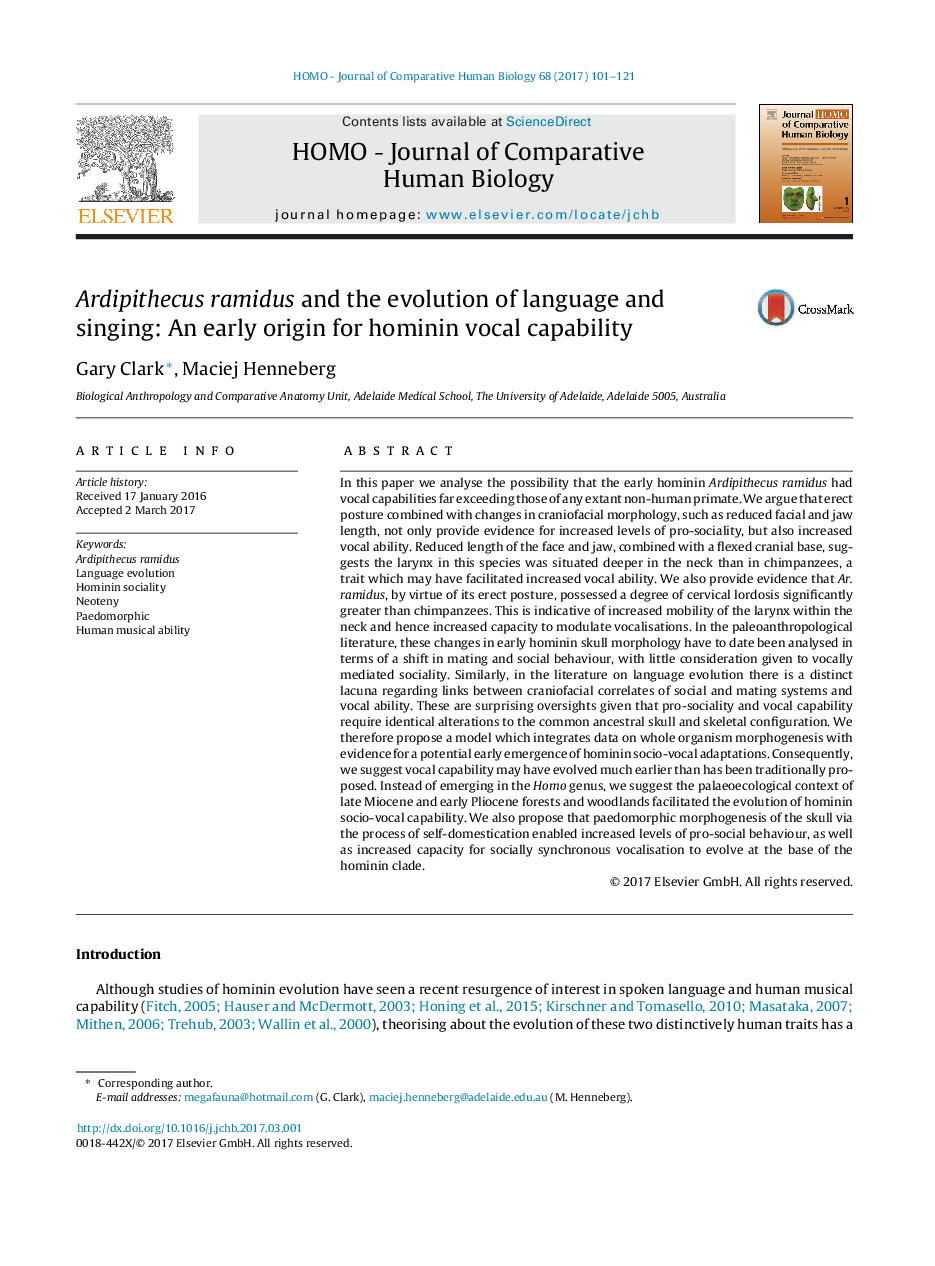| کد مقاله | کد نشریه | سال انتشار | مقاله انگلیسی | نسخه تمام متن |
|---|---|---|---|---|
| 4760463 | 1361887 | 2017 | 21 صفحه PDF | دانلود رایگان |
عنوان انگلیسی مقاله ISI
Ardipithecus ramidus and the evolution of language and singing: An early origin for hominin vocal capability
دانلود مقاله + سفارش ترجمه
دانلود مقاله ISI انگلیسی
رایگان برای ایرانیان
کلمات کلیدی
موضوعات مرتبط
علوم زیستی و بیوفناوری
علوم کشاورزی و بیولوژیک
بوم شناسی، تکامل، رفتار و سامانه شناسی
پیش نمایش صفحه اول مقاله

چکیده انگلیسی
In this paper we analyse the possibility that the early hominin Ardipithecus ramidus had vocal capabilities far exceeding those of any extant non-human primate. We argue that erect posture combined with changes in craniofacial morphology, such as reduced facial and jaw length, not only provide evidence for increased levels of pro-sociality, but also increased vocal ability. Reduced length of the face and jaw, combined with a flexed cranial base, suggests the larynx in this species was situated deeper in the neck than in chimpanzees, a trait which may have facilitated increased vocal ability. We also provide evidence that Ar. ramidus, by virtue of its erect posture, possessed a degree of cervical lordosis significantly greater than chimpanzees. This is indicative of increased mobility of the larynx within the neck and hence increased capacity to modulate vocalisations. In the paleoanthropological literature, these changes in early hominin skull morphology have to date been analysed in terms of a shift in mating and social behaviour, with little consideration given to vocally mediated sociality. Similarly, in the literature on language evolution there is a distinct lacuna regarding links between craniofacial correlates of social and mating systems and vocal ability. These are surprising oversights given that pro-sociality and vocal capability require identical alterations to the common ancestral skull and skeletal configuration. We therefore propose a model which integrates data on whole organism morphogenesis with evidence for a potential early emergence of hominin socio-vocal adaptations. Consequently, we suggest vocal capability may have evolved much earlier than has been traditionally proposed. Instead of emerging in the Homo genus, we suggest the palaeoecological context of late Miocene and early Pliocene forests and woodlands facilitated the evolution of hominin socio-vocal capability. We also propose that paedomorphic morphogenesis of the skull via the process of self-domestication enabled increased levels of pro-social behaviour, as well as increased capacity for socially synchronous vocalisation to evolve at the base of the hominin clade.
ناشر
Database: Elsevier - ScienceDirect (ساینس دایرکت)
Journal: HOMO - Journal of Comparative Human Biology - Volume 68, Issue 2, March 2017, Pages 101-121
Journal: HOMO - Journal of Comparative Human Biology - Volume 68, Issue 2, March 2017, Pages 101-121
نویسندگان
Gary Clark, Maciej Henneberg,